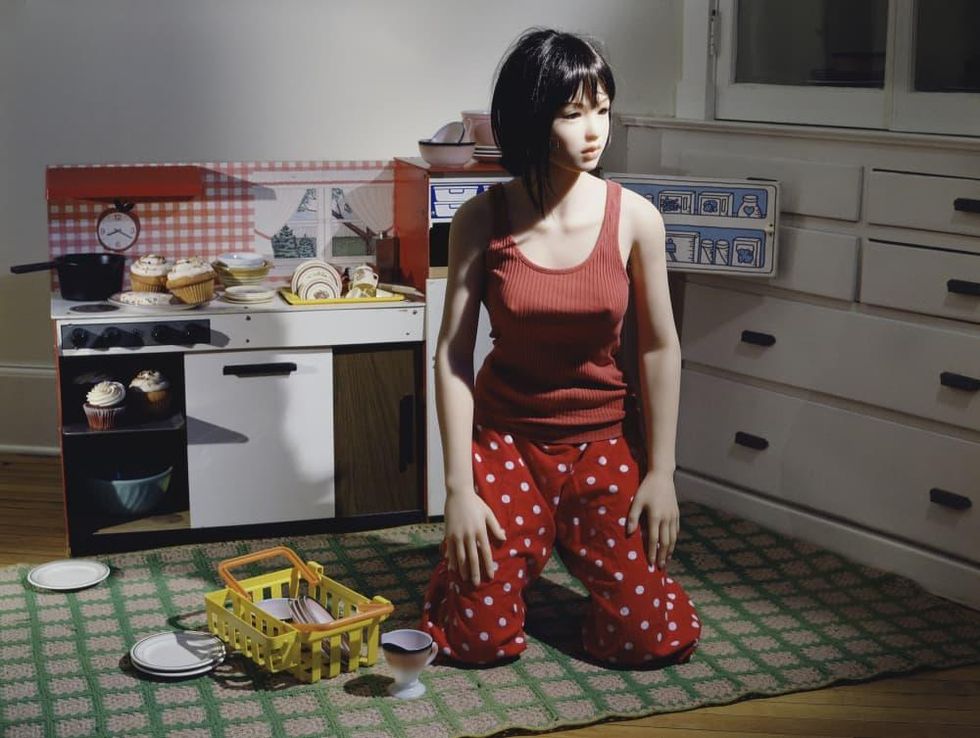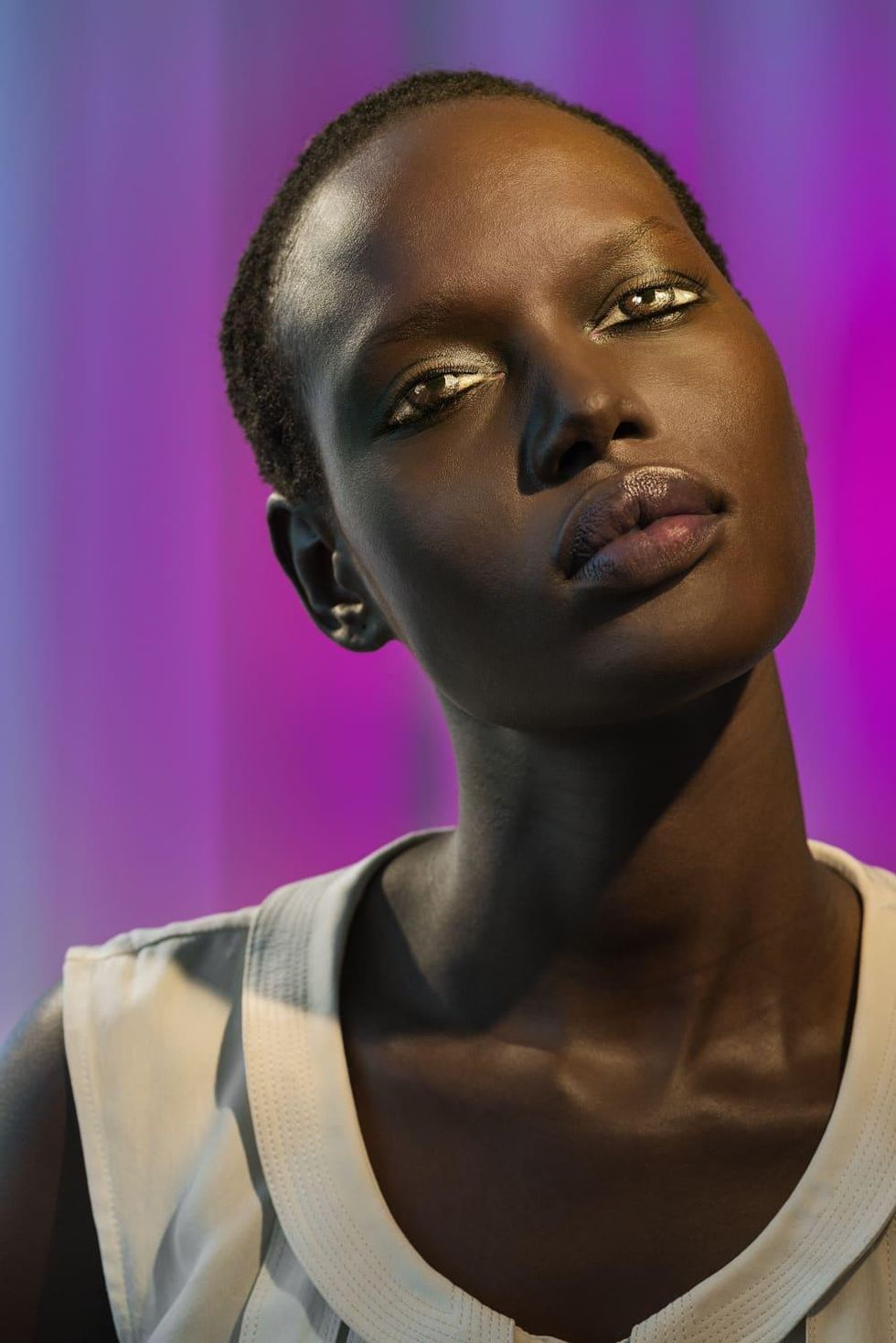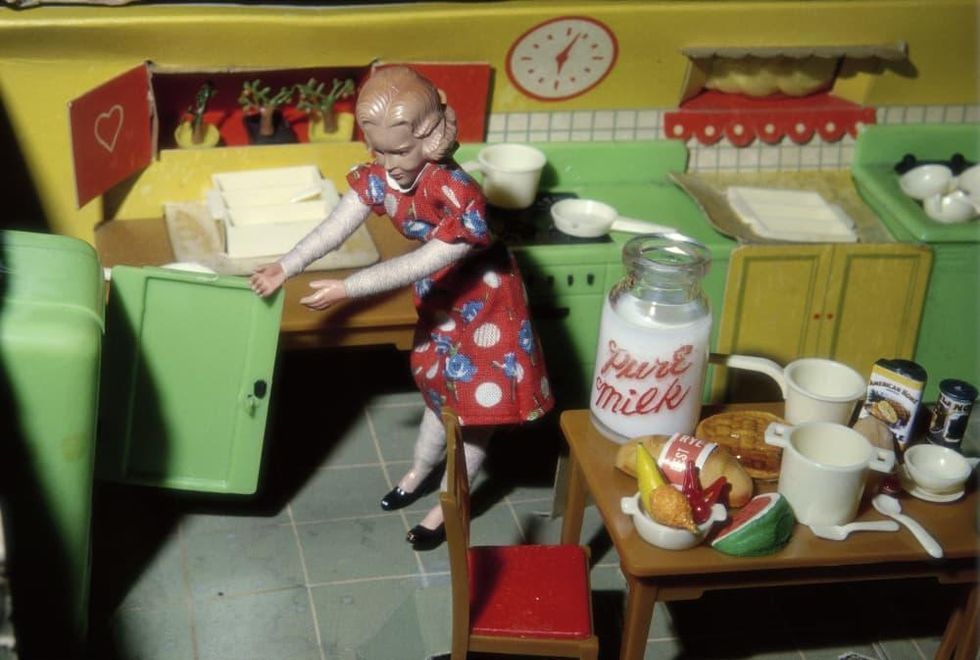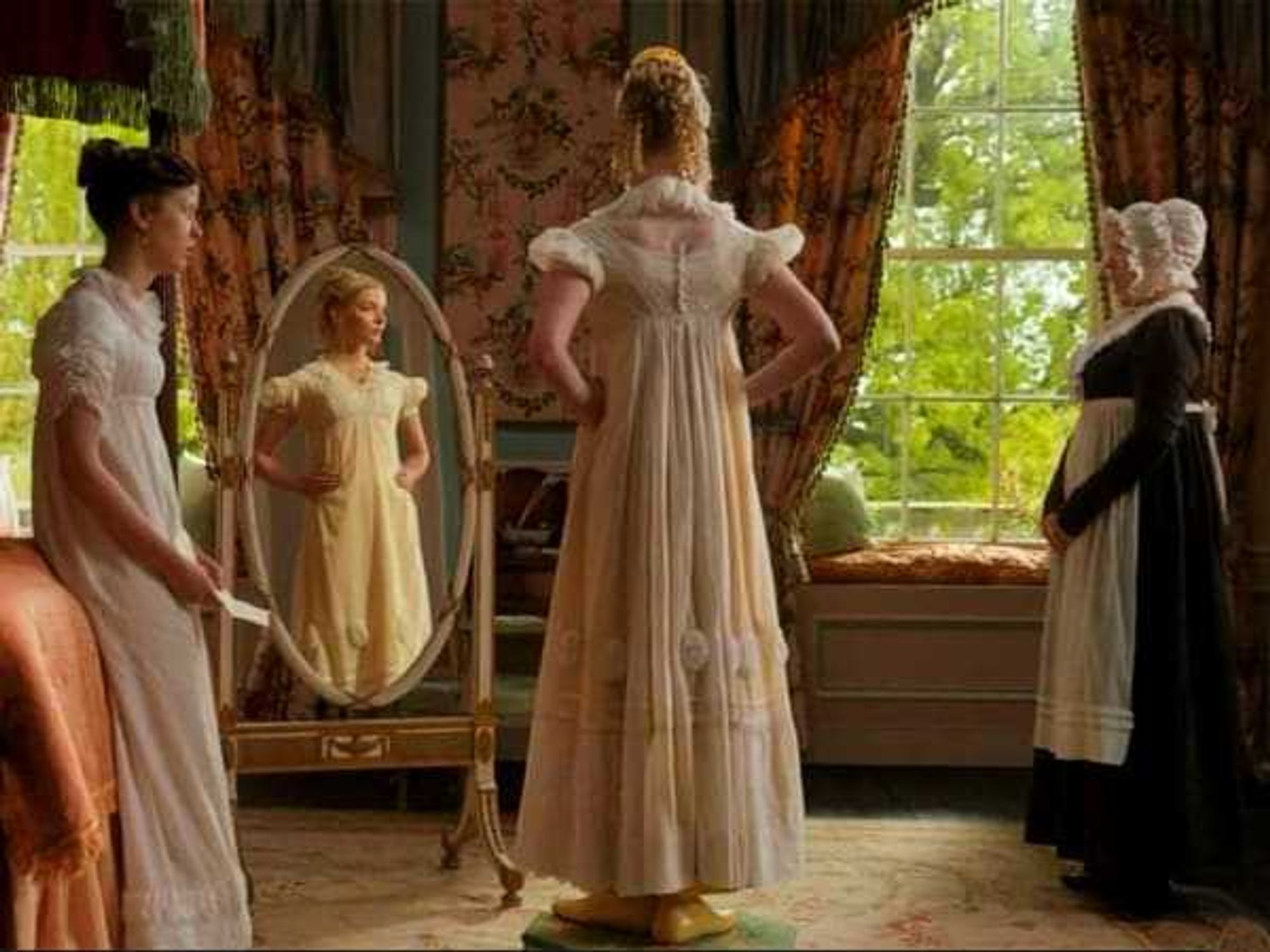I Am a Camera
Artist Laurie Simmons shares lifetime of images at Modern Art Museum of Fort Worth
Through Laurie Simmons' lens, miniature figures explore homes of the future, Japanese love dolls convey a spooky humanity, and fashion models stare at the viewer through painted eyes lacquered onto closed lids.
Famed throughout her 40-year career for her adept ability to capture emotion through artifice, Simmons gets her due with the Modern Art Museum of Fort Worth's major survey "Laurie Simmons: Big Camera/Little Camera." Opening on October 14, the show runs through January before moving to the Museum of Contemporary Art in Chicago.
Curated by Modern Art Museum senior curator Andrea Karnes over the span of three years, "Big Camera/Little Camera" gathers 118 works from each of the artist's series, including her dollhouse imagery of the '70s; her "Walking & Lying Objects" of the 1980s; and her recent "Some New" series of body-painted friends and family — including her children, Grace and Lena — captured in a state of change or renewal.
Simmons initially met Karnes in Marfa in 2014 when her husband, the artist Carroll Dunham, was exhibiting his work. Invited to deliver a lecture at the Modern the following year, Karnes approached the artist about a larger retrospective, and together they began sorting through four decades of imagery — an easier task than one might imagine.
"I have a very immediate and ongoing conversation with my past work," says Simmons, who was inspired to keep her archives in check after inheriting the "chaotic" estate of her late friend, artist Jimmy De Sana, who passed away in 1990.
"I had to spend 20 years archiving and sorting out his belongings, and while I was doing this, I did mine," she says. "I think one of the more interesting things, when you've been working as long as I have, is my own work goes in and out of style. One thing that looks great one time doesn't look that great another, and another series will pop out and look really prescient to me. It's a constantly shifting landscape."
Named after an early photograph that juxtaposed a toy camera with her father's full-size Bolsey, both the title "Big Camera/Little Camera" and the image that inspired it proved to be representative of Simmons' oeuvre.
The daughter of a dentist, the Long Island native had just finished her BFA from Philadelphia's Tyler School of Art when she started playing with "small objects and disparities of scale."
"I didn't know that image would be emblematic of everything I would make after that," Simmons says. "It was kind of stunning when we were searching for a title for the show, and Andrea stumbled on that one. I thought, 'It's not going to get better than that!'"
Coming up with the so-called "Pictures Generation" — a loose group of post-pop artists that included Robert Longo, Barbara Kruger, Cindy Sherman, and Richard Price — Simmons' work stood out for the psychological undertones threading through her depictions of female dolls.
"I never gave up on the idea of making my own photos out of my imagination, and I felt that separated me from a lot of people who were central to that practice," she explains. "When you're talking about playing with dolls and immersing yourself in that world, in today's language you're creating a safe space where you can be the boss. When I was young, there was something about literally creating these small worlds and safe spaces in my own history."
A self-professed tomboy, Simmons gravitated toward dolls in her early work as an alternative to being a street photographer in the then-mean avenues of New York City. Her "safe space" was the studio. The artist initially anticipated viewers would confuse the scale to think she was portraying life-size environments, but, as her images evolved, the use of props and paint allowed her to explore the ideas of how women define who they are through accessories, costumes, or the screens of social media.
Embracing the personal, political, and psychological in her works, Simmons continues "to speak to a greater idea than just my own history or my own life. I'm the opposite of hermetic — I'm so influenced by the culture and politics at large. My work from the very beginning is about women and interior space, whether it's psychological or inside a dollhouse or under the water. I have to be fully or wholly aware of my perception of a woman's place in society at any given moment. I'm like a sieve or a reflector, that's where I find myself."
---
"Big Camera/Little Camera" is open October 14, 2018, through January 27, 2019, at the Modern Art Museum of Fort Worth. The artist will be in conversation with Carroll Dunham on November 13 at 7 pm.




